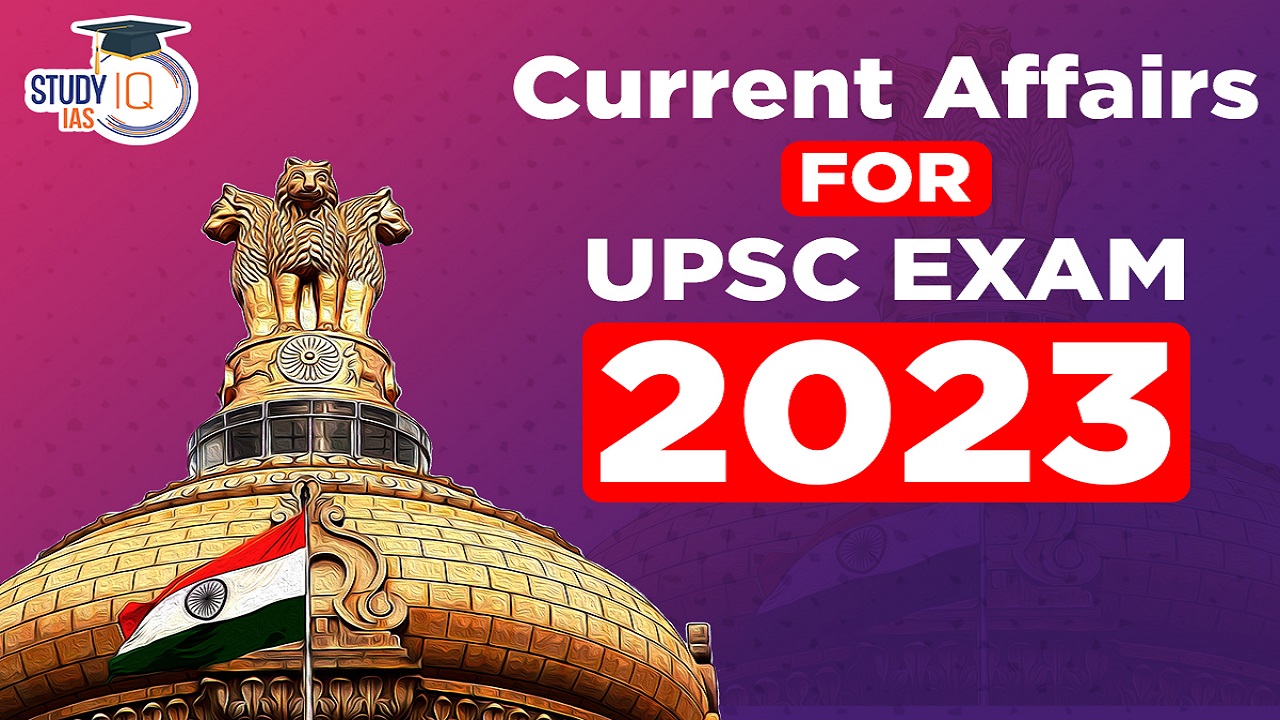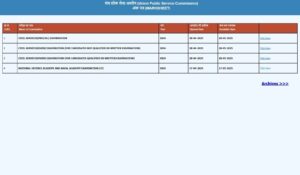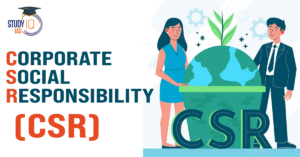Current Affairs 2nd September 2023 for UPSC Prelims Exam
Changing Pattern of Suicide Deaths in India
Context: The Lancet has published a study titled “Changing Pattern of Suicide Deaths in India,” which studied Indian suicide rates using sociodemographic datasets.
Key Highlights of the Study
- The Lancet used National Crime Record Bureau (NCRB) reports on suicide deaths from 2014 to 2021 to conduct this study.
- NCRB was set-up in 1986 under the Ministry of Home Affairs to function as a repository of information on crime and criminals so as to assist the investigators in linking crime to the perpetrators.
- Major publications of NCRB include: Crimes in India, Accidental Deaths and Suicides, Prison Statistics, and Reports on Missing Women and children in India.
- The Study also pointed out the underreporting of suicide deaths in the NCRB compared to the Global Burden of Disease.
- The Global Burden of Disease (GBD) study provides a comprehensive picture of mortality and disability across countries, time, age, and sex.
- The GBD is led by the Institute for Health Metrics and Evaluation (IHME) at the University of Washington.
- Suicidal death rate (SDR): The study found that, in 2021, the suicidal death rate (SDR) among men stood at 34.6%, compared to women’s 13.1%.
- Unemployment, the most evident aftereffect of COVID-19, was the biggest driver behind SDR among both men (48.2%) and women (27.8%).
- Family problems and health issues followed the list, increasing the male-to-female ratio of suicides from 1.9 and 2.5 to 2.4 and 3.2, respectively, during 2014-2021.
- Suicide age: The most common age range for male suicide casualties was 18-29, 30-44, 45-59, and 18-29 for female suicide deaths.
Current Affairs 1st September 2023 for UPSC Prelims Exam
National Mission for Clean Ganga (NMCG)
Context: In the seven years since the Union Government commenced its National Mission for Clean Ganga (NMCG), the work still remains in progress.
About National Mission for Clean Ganga (NMCG)
- Definition: National Mission for Clean Ganga (NMCG) was registered as a society on 12th August 2011 under the Societies Registration Act 1860.
- National Mission for Clean Ganga, endeavours to deploy the best available knowledge and resources across the world for Ganga rejuvenation.
- NMCG is supported by State Programme Management Groups (SPMGs) which act as implementing arm of State Ganga Committees.

- Aim:
- To ensure effective abatement of pollution and rejuvenation of the river Ganga by adopting a river basin approach to promote inter-sectoral co-ordination for comprehensive planning and management and
- To maintain minimum ecological flows in the river Ganga with the aim of ensuring water quality and environmentally sustainable development.
- Vision: Restoring the wholesomeness of the river defined in terms of ensuring:
- Aviral Dhara – that is continuous flow of water
- Nirmal Dhara – that is unpolluted flow of water
- Geologic and ecological integrity
- Management Structure: NMCG has a two tier management structure and comprises of Governing Council and Executive Committee.
- Both of them are headed by Director General, NMCG.
- Executive Committee has been authorized to accord approval for all projects up to Rs.1000 crore.
- Work Progress under NMCG:
- In the seven years post commencement of NMCG, it has installed treatment plants capable of treating just 20% of the sewage estimated to be generated in the five major States that lie along the river i.e. Uttarakhand, Uttar Pradesh, Bihar, Jharkhand and West Bengal. This is expected to increase to about 33% by 2024.
- According to the latest projections by senior officials in the NMCG, the treatment plants will be capable of treating 60% of sewage by December 2026.
- With 36, Uttarakhand has the highest number of plants that have been set up or upgraded in the case of older plants, followed by Uttar Pradesh (35), and West Bengal (11).
- Though the NMCG is a ₹20,000-crore mission, the government has so far given in-principle approval for projects worth ₹37,396 crore, of which only ₹14,745 crore has been released to the States for infrastructure work.
- The improvement in water quality along the Ganga is evident with the rise in dolphin population from 2,000 to about 4,000.
- Fishermen are also reporting the increased presence of Indian carp [a fish species] that only thrives in clean water.
- The NMCG is now working to develop a water quality index, on the lines of the air quality index, to be able to better communicate about river-water quality.
Stem Cell Therapy
Context: The Delhi High Court has recently permitted two children with autism spectrum disorder (ASD) to undergo stem cell therapy for treatment of their condition.
About Stem Cell Therapy
- Stem Cells: Stem cells are unspecialised cells, meaning they can eventually become any one of the various types of cells that make up different parts of the body.
- They can replenish cells in the skin, bone, blood and other organs during development, and regenerate and repair tissues when they’re damaged.
- Types: There are different types of stem cells:
- Embryonic stem cells are the first cells that initially form after a sperm fertilises an egg, and can give rise to all other cell types in the human body.
- Adult stem cells are more mature, meaning they can replace damaged cells only in one type of organ and have a limited ability to multiply.
- Researchers can reprogram adult stem cells, or differentiated cells, in the lab to act like embryonic stem cells.

- Use of Stem Cells in Medicine:
- Stem cell therapy is a form of regenerative medicine designed to repair damaged cells within the body by reducing inflammation and modulating the immune system.
- This phenomenon makes stem cell therapy a viable treatment option for various medical conditions.
- For instance, hematopoietic stem cell transplantation has been used to treat people with conditions such as leukaemia and lymphoma.
- After chemotherapy or radiation therapy wrecks the patient’s healthy cells (along with the cancerous ones), a donor’s healthy bone marrow reintroduces functional stem cells to replicate inside of a patient and to produce additional normal blood cells.
- Process of Stem Cell Therapy:
- Stem cell extraction: The basic process of stem cell therapy starts with taking out of stem cells containing bone marrow and processing the stem cells in a lab.
- Specialisation: Then the stem cells are specialized into the necessary adult cell type. These stem cells are manipulated to specialize into specific types of cells, such as heart muscle cells, blood cells or nerve cells.
- Implantation: Finally, those mature cells replace tissue that is damaged by disease or injury.
- This method could be used to:
- Replace neurons damaged by spinal cord injury, stroke or other neurological problems.
- Produce insulin that could treat people with diabetes or cartilage to repair damage caused by arthritis.
- Replace virtually any tissue or organ that is injured or diseased.
- The cells could be used to study disease, identify new drugs, or screen drugs for toxic side effects.
- Limitation: There are typically a very small number of adult stem cells in each tissue, and once removed from the body, their capacity to divide is limited. This is the fundamental limitation of stem cell therapies at the moment.
- Use of Stem Cells in Autism:
- Autism spectrum disorder is a neurological and developmental disorder that affects how people interact with others, communicate, learn, and behave.
- People with ASD often have difficulty with communication and interaction with other people, restricted interests and repetitive behaviours, and symptoms that affect their ability to function in school, work, and other areas of life.
- Currently, there is no cure for ASD – treatments and therapies are geared towards managing symptoms and helping someone with ASD lead a happy and functional life.
- Conventional therapies include social skills training, early intensive behaviour therapy, applied behaviour analysis, speech therapy, and occupational therapy.
- Psychotropic drugs and transcranial magnetic stimulation are also commonly used.
- According to some experts, ASD has potential to be a good candidate for stem cell therapy because evidence exists that some types of stem cells, given intravenously, can improve the overall regulation of the immune system and the neural connectivity in the brain.
International Solar Alliance
Context: The International Solar Alliance (ISA) recently hosted its 5th regional meeting in Kigali, Rwanda.
More on News
- The Union Minister for Power and New & Renewable Energy, Government of India, inaugurated a total of nine solar power demonstration projects in the Republic of Uganda, the Union of Comoros and the Republic of Mali.
- Four of these projects are in Uganda, two in Comoros and three in Mali.
- The ISA felicitated the winners of its SolarX StartUp Challenge.
- Launched specifically for Africa, this initiative aimed to promote entrepreneurship and advance clean energy in African ISA Member Countries.
- Among the ISA initiatives catering to the needs of the African region, the Global Solar Facility lays a foundation for boosting innovative solar technologies through private investment in Africa.
About International Solar Alliance
- Definition: It is a treaty-based international intergovernmental organization that was launched in 2015, by the Prime Minister of India and the President of France, at the United Nations Climate Change Conference held in Paris.
- Aim:
- The International Solar Alliance (ISA) is an action-oriented, member-driven, collaborative platform for increased deployment of solar energy technologies as a means for bringing energy access, ensuring energy security, and driving energy transition in its member countries.
- The ISA is guided by its ‘Towards 1000’ strategy which aims to:
- mobilise USD 1,000 billions of investments in solar energy solutions by 2030,
- deliver energy access to 1,000 million people using clean energy solutions,
- installation of 1,000 GW of solar energy capacity.
- mitigate global solar emissions to the tune of 1,000 million tonnes of CO2 every year.
- Vision: Let us together make the sun brighter.
- Mission: Every home no matter how far away, will have a light at home.
- Members:
- With the amendment of its Framework Agreement in 2020, all member states of the United Nations are now eligible to join the ISA.
- At present, 94 countries have signed and ratified the ISA Framework Agreement.
- Governance:
- The Assembly of the ISA is the apex decision-making body which comprises of representatives from each Member Country.
- The Assembly deliberates matters of substance such as the selection of the Director General, achievement of ISA objectives, its functioning, approval of operating budget etc.
- Headquarter: National Institute of Solar Energy (NISE) in Gurugram, India.


 UDAN Scheme, Objectives, Funding and Ach...
UDAN Scheme, Objectives, Funding and Ach...
 UPSC Cut Off 2024: Download Prelims, Mai...
UPSC Cut Off 2024: Download Prelims, Mai...
 Corporate Social Responsibility (CSR), O...
Corporate Social Responsibility (CSR), O...





















